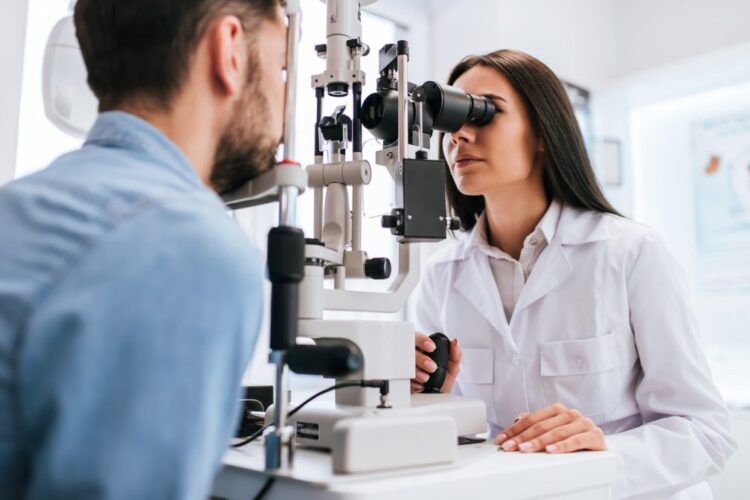1. Blurred or Double Vision
Regular eye exams are essential for maintaining good eye health, but many people wait until they experience discomfort or vision problems before visiting an optometrist. However, some signs can indicate that it’s time to schedule an eye exam at Heartland Optical even if you’re not experiencing any immediate pain. Catching eye issues early can help prevent further complications and preserve your vision. Here are some key signs that you may need to see an optometrist:
One of the most obvious signs that you should see an optometrist is blurred or double vision. Whether it’s happening constantly or intermittently, having trouble focusing on objects is a sign that your vision may have changed. This could indicate that your current prescription is no longer sufficient or that there is an underlying issue, such as an eye disease or even a neurological problem. Prompt attention can help determine the cause and provide an appropriate solution.
2. Frequent Headaches
If you’re frequently experiencing headaches, especially after reading, working on a computer, or watching TV, it could be a sign that your eyes are straining to focus. Headaches caused by eye strain are often linked to vision problems, such as uncorrected refractive errors (nearsightedness, farsightedness, or astigmatism). An optometrist can evaluate your vision and determine if a change in prescription or other treatments is necessary to alleviate the strain and prevent headaches.
3. Eye Fatigue and Strain
Eye fatigue and strain can result from prolonged periods of focusing, especially with modern devices like smartphones, tablets, and computers. If you notice that your eyes feel tired, dry, or sore after extended screen time or reading, this may be a sign that you need an eye exam at heartlandoptical.com. Digital eye strain is becoming increasingly common, and an optometrist can recommend treatments such as blue light-blocking lenses or eye exercises to reduce discomfort.
4. Sudden Vision Loss or Disturbances
Sudden or gradual vision loss, whether it’s partial or complete, is a serious symptom that requires immediate attention. If you experience vision disturbances such as flashes of light, floating spots, or a curtain-like shadow in your peripheral vision, it could be a sign of a more severe condition, such as a retinal detachment or macular degeneration. These conditions require urgent care from an optometrist or ophthalmologist to prevent permanent vision loss.
5. Dry or Itchy Eyes
Dry, itchy, or red eyes can result from many different causes, including allergies, contact lens use, or a lack of proper tear production. However, if these symptoms persist or worsen over time, it’s important to consult an optometrist. They can evaluate the health of your eyes and help determine if you have dry eye syndrome, which occurs when your eyes don’t produce enough tears or when the tears evaporate too quickly. An optometrist can recommend treatment options, such as artificial tears, prescription medications, or lifestyle changes.
Many eye conditions can develop slowly and without noticeable symptoms, which is why regular eye exams are important for long-term eye health. If you experience any of the signs mentioned aboveblurred vision, headaches, eye fatigue, or changes in vision or eye appearanceit’s time to see an optometrist. Early intervention can prevent further complications and ensure that your vision remains clear and healthy for years to come. Don’t wait until symptoms worsen; take charge of your eye health by scheduling a visit with an optometrist today.

